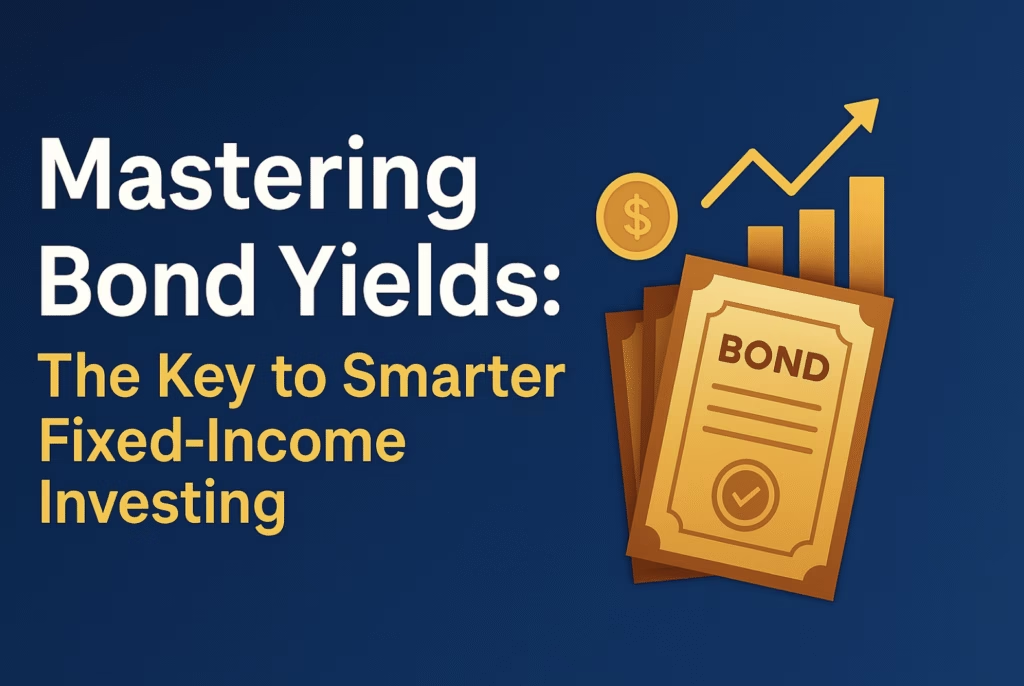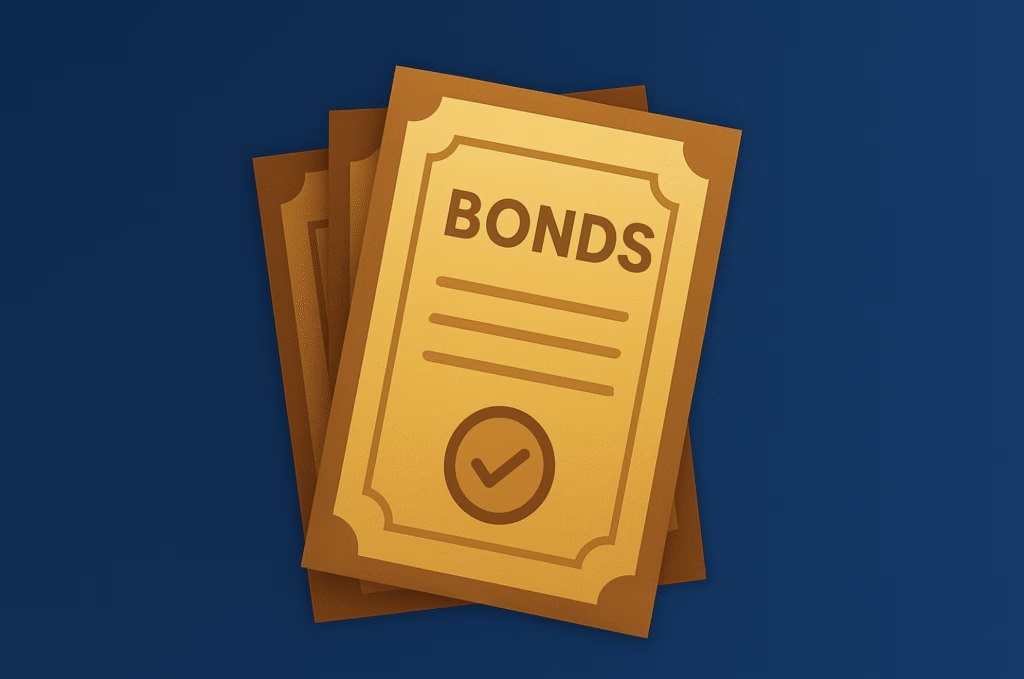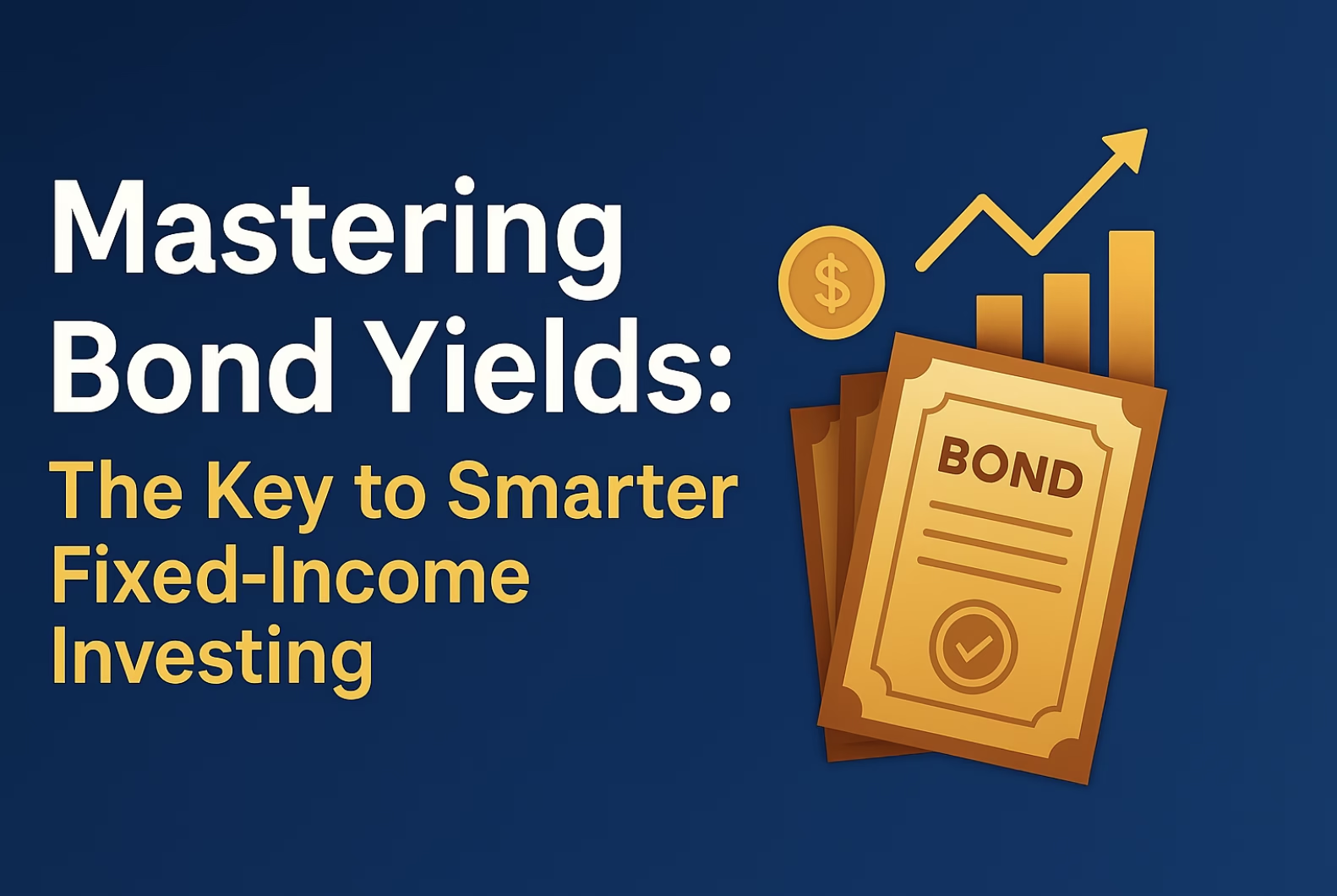When most people hear about bonds, they think bonds are safe or fixed interest instruments. But in bond investing, the real magic does not lie in receiving interest………….

Mastering Bonds Interest, Real Returns and Yields
When most people hear about bonds, they think bonds are safe or fixed interest instruments. But in bond investing, the real magic does not lie in receiving interest, it lies in the understanding of bond yield. In this blog, we are going to deep dive into tools that evaluate bond investing like a true pro.
Understanding How Bond Interest Works
At the core of every bond is that we lend money to governments, corporations, and institutions. In return, they promise us to pay a fixed interest rate twice a year. This interest payment is called a coupon in bond investing. And this coupon is based on the face value of the bond (at what price the bond is issued). Typically, this value is $1,000.
Example: You take a bond of face value $1,000, and they promise you a 7% coupon rate (interest rate). Then after 6 months, you will get $35, and after another 6 months, you will get another $35. Usually, bond coupon rates are distributed twice a year, that means half-yearly. While the coupon is important, it only tells one side of the story. Your real return can be higher or lower depending upon at which price you purchased the bond and how long you hold it.
Yield vs. Coupon: What Actually Matters
Many beginners mistakenly look only at the coupon interest, assuming it will tell them how much return they are going to make. But in reality, you will get returns on the purchase value of the bond. If you purchased the bond below face value or above face value, that will affect your real return.
Example: If you purchased a bond at a price below face value — say the face value of the bond is $1,000 and you purchased it at $950 — and the coupon rate is 6% on the face value, then you are getting $60 on face value. But in reality, your return will be calculated on the purchase price. Like you purchased the bond at $950, then $60 of $950 is 6.23%. Then your return is more than the coupon rate. This is the same in the higher case, but in that case, your real return would be below the coupon rate. However, the current yield is not the full picture — it eliminates the concept of the time value of money.

Yield to Maturity Your True Real Return
If you want to know how much money you are making by holding the bond till the maturity period, you must calculate the yield to maturity (YTM). This is the total return you will earn till maturity, assuming all the interest payments you invest at the same rate. YTM includes:
- Annual coupon payments
- Any gain or loss from buying at a discount or premium price
- Time remaining until maturity
YTM is used by many professionals to choose bonds. It’s especially helpful at a time when higher coupon bonds are trading at a premium value or lower coupon rate bonds are trading at a discount value.
Yield to Call
Some bonds can be called — meaning the issuer pays early when the interest rate falls. This changes your return significantly. The yield to call helps to estimate your return assuming the bond is called at the earliest possible date. Many high coupon bonds are callable, and if you don’t know about that, you can end up with a lower return rate than expected. Always check a bond’s call date and call price before investing.
Why Bond Prices Are Affected by Interest Rate?
One of the most critical things to understand about bonds is that bond prices and market interest rates move in opposite directions. That means if the interest rate rises, then the newly issued bonds give you better yield than previously issued bonds that offer you lower yield, that’s why their price falls. If rates fall, then the newly issued bonds give you lower yield, while previously issued bonds give you better yield, that’s why their prices rise. This is called interest rate risk. And it affects long-term bonds more than short-term bonds. In the current markets, interest rate is being cut by the FED or by RBI. Then the long-term prices are increasing and they are attractive now, but also face volatility.
Duration Measuring Interest Rate Sensitivity
How sensitive a bond is to interest rate changes, we use a measure called duration. Duration will tell if the interest rate is increased by 1%, then how much bond price will likely change.
Example: If a bond’s duration is 7, then if the interest rate increases by 1%, then the bond’s price will decrease by 7%.
Compound Returns or Reinvestment Risk
Another factor that affects the bond’s return is reinvestment risk. Most bonds pay periodic interest, and if you can’t reinvest those amounts at the same rate, your actual return may fall short of YTM. This risk is relevant when the interest rates are declining. If you want to avoid reinvestment risk, then you have to buy zero coupon bonds. These bonds do not pay periodic interest but give you lump sum money at maturity.
Total Return The Real Investment Picture
Ultimately, you have to care about total return it isn’t just the coupon rate or yield. Total return includes:
- Interest received
- Any gain or loss if you sell the bond
- Reinvestment income
- Inflation impact on your buying power
Inflation can quietly erode your return. Like if your bond is giving 5% return but the inflation is 3%, then your actual return is only 2%. To hedge this, invest your money in TIPS bonds that adjust to inflation or protect your purchasing power.
Conclusion
Interest attracts most investors, but you should also keep in mind that yield is also important. This will help you avoid costly mistakes, manage your risk, and build a more reliable and income-generating portfolio.
